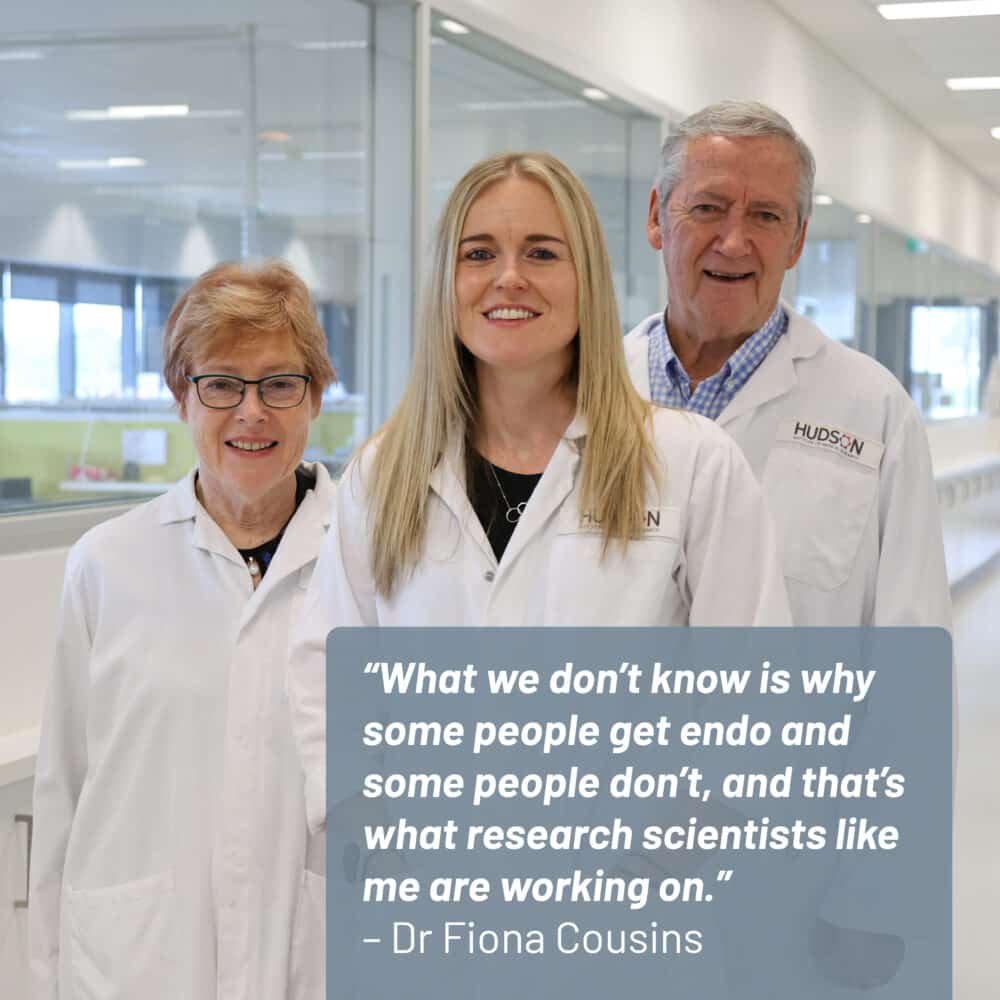Gut bacteria and the immune system—mapping out interactions
By Hudson Institute communications
Hudson Institute scientists Dr Emily Gulliver and Dr Sam Forster were part of a leading collaborative study with the Wellcome Sanger Institute, which created the first detailed cell atlas of immune cells and gut bacteria within the human colon.

Published recently in Nature Immunology, the study revealed different immune niches, showing changes in the bacterial microbiome and immune cells throughout the colon. As part of the Human Cell Atlas initiative to map every human cell type, these results will enable new studies into diseases which affect specific regions of the colon, such as ulcerative colitis and colorectal cancer.
The results revealed the interaction between the microbiome and our immune cells. This forms an important resource, which will help scientists to understand how these microbial cells are tolerated by the immune system in health.
What is a microbiome?
The gut microbiome is a complex ecosystem composed of millions of microbes, and these bacteria are thought to play important roles in digestion, in regulating the immune system and in protecting against disease. They are essential to human health, and imbalances in our gut microbiome can contribute to autoimmune diseases such as inflammatory bowel diseases and asthma.
The gut also has a rich community of immune cells, which help to repair tissues and defend against infection. However, there is little detailed information on how the microbiome interacts with the gut resident immune cells, which immune cells co-exist with bacteria in different locations, and why different diseases affect distinct areas of the gut.
What did the team investigate?
To shed light on this, researchers studied three different parts of the healthy colon from organ donors*, simultaneously analysing the immune cells and the bacterial microbiome from each area. By sequencing the active genes of 41,000 individual immune cells, they were able to identify cell type specific genes that were switched on in different immune cell populations in each location. They also identified the bacteria present in the same colon region, to reveal how the immune system and bacteria interact.
“The gut microbiome plays a major role in health and disease, and understanding how this interacts with the immune system is vital. Our unique approach allowed us to create the first in-depth map of immune cells and their neighbouring bacteria in the healthy human colon, and revealed that surprisingly, there are distinct immune niches across the colon, with different cell activation states in different areas”, Dr Kylie James, Wellcome Sanger Institute.
The study revealed that not only were there differences between the immune cells in different parts of the colon, but that the microbiome also subtly changed, with a broader range of bacteria further down the colon.
“We are made up of as many bacteria as human cells and there is a symbiotic relationship between humans and their microbiome. We know this is linked to many aspects of health, with imbalances in gut bacteria associated with immune diseases ranging from Inflammatory Bowel Disease to asthma. By revealing the diversity of the microbiome in specific locations in the colon, and the interactions with immune cells, we can start to understand the biology behind this, and inform future research on site-specific gut bacteria”, Dr Trevor Lawley, Wellcome Sanger Institute.
Previous work on mice had shown that immune cells in lymph nodes could be targeted to particular destinations—like an immune ‘satnav’. For the first time, this study showed that regulatory immune cells, which dampen down an immune response, moved from lymph nodes to the colon. This could be one way the intestine tolerates or even welcomes the microbiome.
“This study is part of the global Human Cell Atlas initiative to map every cell type in the human body. It gives a new understanding of the relationship between immune cells and the microbiome in healthy colon tissue and by allowing us to hone in on cells in particular areas, it will be a critical reference for ongoing work into diseases that affect specific regions of the colon”, Dr Sarah Teichmann, Wellcome Sanger Institute and co-chair of the Human Cell Atlas Organising Committee.
*The colon tissue samples came from the Cambridge Biorepository for Translational Medicine from deceased organ donors.
Funding | This research was supported by funding from Wellcome (grants WT206194, 213555/Z/18/Z) , European Research Council (grant no. 646794), Christ’s College, University of Cambridge, the European Union’s H2020 research and innovation programme “ENLIGHT-TEN” under the Marie Sklodowska-Curie grant agreement 675395 and the NIHR Cambridge Biomedical Research Centre.
The Wellcome Sanger Institute is a world leading genomics research centre. We undertake large-scale research that forms the foundations of knowledge in biology and medicine. We are open and collaborative; our data, results, tools and technologies are shared across the globe to advance science. Our ambition is vast – we take on projects that are not possible anywhere else. We use the power of genome sequencing to understand and harness the information in DNA. Funded by Wellcome, we have the freedom and support to push the boundaries of genomics. Our findings are used to improve health and to understand life on Earth. Find out more at www.sanger.ac.uk or follow us on Twitter, Facebook, LinkedIn and on our Blog.
Contact us
Hudson Institute communications
t: + 61 3 8572 2761
e: communications@hudson.org.au
About Hudson Institute
Hudson Institute’ s research programs deliver in five areas of medical need – inflammation, cancer, reproductive health, newborn health, and hormones and health. More
Hudson News
Get the inside view on discoveries and patient stories
“Thank you Hudson Institute researchers. Your work brings such hope to all women with ovarian cancer knowing that potentially women in the future won't have to go through what we have!”





